What are Medicare Parts A and B (Original Medicare)?
Medicare is a federal health insurance program for people 65 years or older and for certain younger people with disabilities, and people with End-Stage Renal Disease (ESRD). You are automatically enrolled in Medicare hospital insurance (Part A) when you apply for Social Security benefits – usually upon reaching 65 years of age. Part A covers inpatient care in a hospital or a skilled nursing facility, and hospice. Part A also covers services like lab tests, surgery, doctor visits and home health care. Part B covers physician and other health care providers’ services, outpatient care, durable medical equipment and some preventive services.
Medicare pays for many healthcare services and supplies, but it doesn’t cover all of your healthcare costs. For example, you pay a deductible for each hospital stay and coinsurance anytime you use the services of a physician or surgeon. Also, drug coverage is limited. Because Medicare rarely pays the full cost of covered services, you may want to consider a Medicare Advantage or Medicare Supplement insurance plan
What is Medicare Advantage?
A Medicare Advantage health plan, sometimes called Part C or MA Plan, is an alternative to Medicare Parts A and B. Medicare Advantage plans are offered by private companies approved by Medicare and provide all of your Medicare Part A and Part B coverage. These plans offer emergency and urgent care, limits on out-of-pocket expenses and some offer extra benefits such as dental, vision, hearing and/or health and wellness programs. Most MA plans offer prescription drug coverage. The most common types of Medicare Advantage plans include:
- Medicare Health Maintenance Organization plans (HMO
- Medicare Preferred Provider Organization plans (PPO)
- Medicare Private Fee-for-Service plans (PFFS)
What is a Medicare Advantage HMO plan?
A Medicare Advantage HMO plan features specific lists of doctors, hospitals, and other providers that you must use to receive benefits. HMOs often provide additional benefits not found in Medicare, including coverage for deductibles, a drug benefit plan, and wellness or fitness programs. If you select Medicare Advantage HMO, it is an alternative to your Medicare coverage. Out-of-pocket costs are typically lower than PPO plans.
What is a Medicare Advantage PPO plan?
With Medicare Advantage PPO, you can see any doctor you want. However, if you choose a doctor who participates in the network, you may have a lower cost than if you visit a non-network doctor. Plus, referrals aren’t needed, and you don’t have to see a primary care physician first. In addition to prescription drug benefits, Medicare Advantage PPOs may offer other benefits such as dental, vision, and wellness programs. If you select a Medicare Advantage PPO, it is an alternative to your Medicare coverage.
What is a Medicare Advantage PFFS plan?
A Medicare PFFS Plan is a type of Medicare Advantage Plan offered by a private insurance company. The plan determines how much it will pay doctors, other health care providers, and hospitals, and how much you must pay when you get care. Plans feature limits on out-of-pocket expenses, coverage for emergency and urgent care, and in some cases, a prescription drug benefit. If you select a PFFS plan, it is an alternative to your Medicare coverage. You can go to any Medicare-approved doctor, other health care provider or hospital that accepts the plan’s payment terms and agrees to treat you.
What is a Medicare Prescription Drug (Part D) plan?
A Medicare Prescription Drug Plan (sometimes called PDP) adds drug coverage to Original Medicare and some Medicare Cost Plans, some Medicare Private Fee-for Service (PFFS) Plans, and Medicare Medical Account (MSA) Plans. Each Medicare Prescription Drug Plan has its own list of covered drugs (called a formulary). Many Medicare drug plans place drugs into different “tiers” on their formularies. Drugs in each tier have a different cost. Medicare prescription drug coverage provides protection for people who have very high drug costs or from unexpected prescription drug bills in the future.
What is a Medicare Supplement insurance plan?
A Medicare Supplement Insurance plan (Medigap) can help cover some of the costs that are left unpaid after Medicare Parts A and B pay their portion of your healthcare expenses. Unlike a Medicare Advantage plan, which is an alternative to your Medicare Part A and B benefits, a Medicare Supplement Insurance plan is purchased in addition to your Medicare Part A and B benefits.
Medicare Supplement policies are standardized into 10 plans – labeled “A” through “N”, each with its own set of benefits. All policies offer the same basic benefits but some offer additional benefits.
Medicare Supplement Insurance policies are sold by private insurance companies. While the costs of these policies may vary, individual insurance companies must provide the same standardized benefits. Some companies may offer additional benefits. To purchase a policy, in general you must be enrolled in Medicare Part A and Part B. In addition to paying the monthly Medicare Part B premium, you will have to pay a premium to the insurance company providing your Medicare Supplement coverage.
How do I know if I have Medicare Parts A and B?
Look at the “Is Entitled To” section of your red, white, and blue Medicare card. If you have Part A, “HOSPITAL (PART A)” is printed on your card. If you have Part B, “MEDICAL (PART B)” is printed on your card.
Can you help me compare Medicare Parts A and B (Original Medicare) to the Medicare Advantage plans?
Medicare Parts A and B (managed by the government)
Medicare Advantage Plans (sponsored by the government and offered by private insurance companies)
Benefits
- Part A – Inpatient hospital
- Part B – Doctors’ services
- Medicare Advantage – Inpatient hospital and provider services, plus additional benefits such as vision and dental
Premium
- Part A – Most people will not pay a premium. If you buy Part A, you’ll pay up to $426 each month (reduced to $407 in 2015).
- Part B – Most people pay the premium of $104.90 each month (this amount won’t change in 2015) and $147 per year for your Part B deductible (this amount won’t change in 2015).
- Medicare Advantage Plans – Monthly plan premium varies by plan and geographic area. Some plans have no additional monthly premium.
Types of plans
- Original Medicare – Fee-for-service
- Medicare Advantage Plans – Health Maintenance Organization (HMO), Preferred Provider Organization (PPO), Private Fee for Service (PFFS), and Special Needs Plans (SNPs)
Billing procedures
- Provider bills Medicare first, insurance second
- Simplified administration – in most cases, provider bills only the Medicare Advantage insurance company
Where can I get more information about Medicare Advantage plans, prescription drug plans, Medicare Supplement insurance plans, and my Social Security benefits?
Centers for Medicare & Medicaid Services
7500 Security Blvd.
Baltimore, MD 21244-1850
1-800-633-4227
TTY 1-877-486-2048
24 hours a day; seven days a week
www.medicare.gov
Social Security Administration
Office of Public Inquires
Windsor Park Blvd.
6401 Security Blvd.
Baltimore, MD 21235
1-800-772-1213
TTY 1-800-325-0778
7 a.m. – 7 p.m.
www.ssa.gov
What is the Medicare Modernization Act?
The Medicare Modernization Act – or “MMA” – introduced the most sweeping changes to Medicare since the program was first signed into law in 1965. The full name of the Act is Medicare Prescription Drug, Improvement, and Modernization Act of 2003.
The changes went into effect January 1, 2006, providing you more choices in Medicare coverage – including prescription drug benefits. At its core, the Medicare Modernization Act extends prescription drug coverage to everyone who has Medicare. This prescription drug benefit is known as “Medicare Part D.”
What are the basic parts of the Medicare program now?
There are four parts to Medicare:
Medicare Part A is hospital insurance – including hospital stays, rehabilitative nursing facilities, home healthcare, and hospice. Most people don’t have to pay a premium for Part A because it was prepaid through their payroll tax while they were working.
Medicare Part B is medical insurance – including doctors’ services and outpatient care. There is a monthly premium for Part B. If you don’t sign up for Part B when you first become eligible at age 65 or when you have been disabled for two years and you decide you need to join in the future, you may have to pay a penalty for each year you didn’t belong.
Medicare Part C is the Medicare Advantage Plan. With this option, you can opt to have your Medicare Parts A and B provided by a private insurance company.
Medicare Part D is prescription drug coverage. In one way, Part D is like Part B: If you don’t join at age 65, you may have to pay a penalty when you do join.
What's the difference between Medicare Parts A and B and Medicare prescription drug coverage?
Medicare covers hospital costs under Part A and medical costs like doctor’s office visits under Part B. Medicare Part D provides benefits for prescription drugs obtained at a pharmacy – a growing part of many peoples’ healthcare budgets.
Prescription drug plan coverage differs from Medicare in two ways: (1) It is available only through private insurance companies and (2) you should use in-network pharmacies to take full advantage of your coverage.

